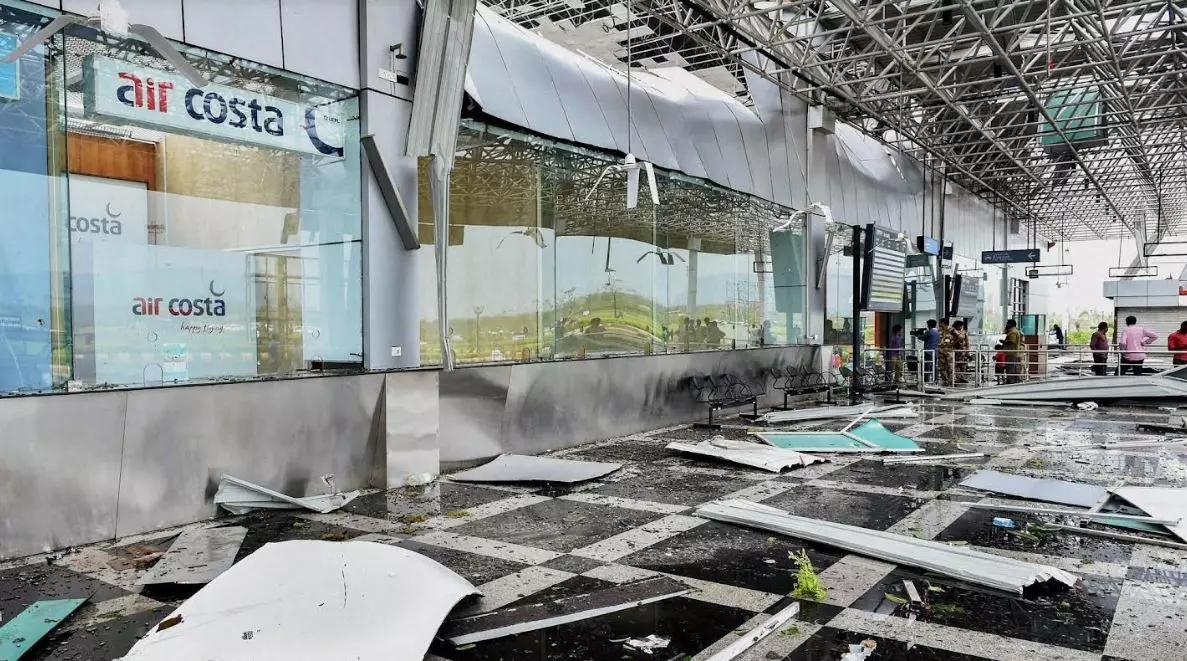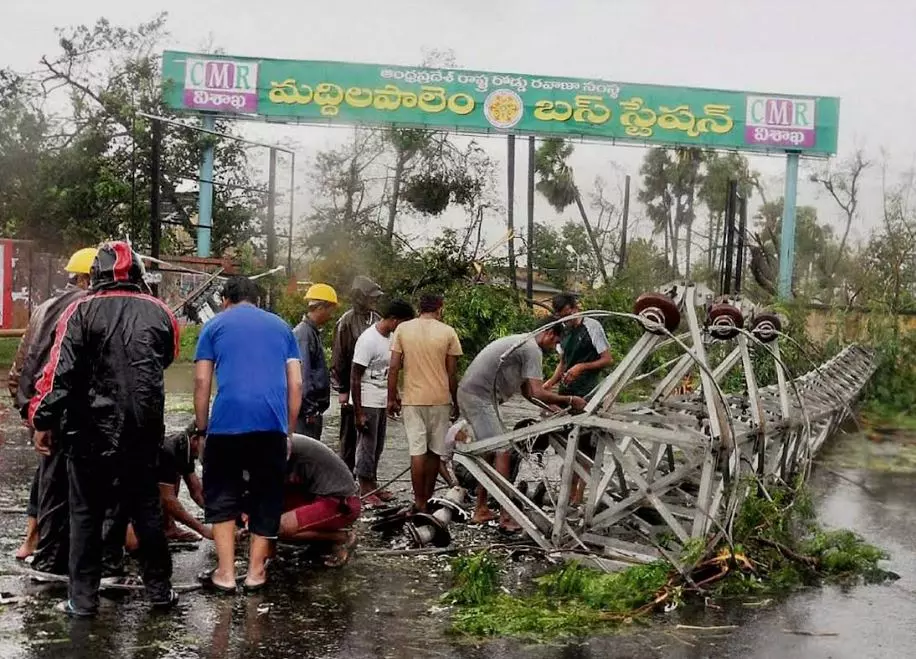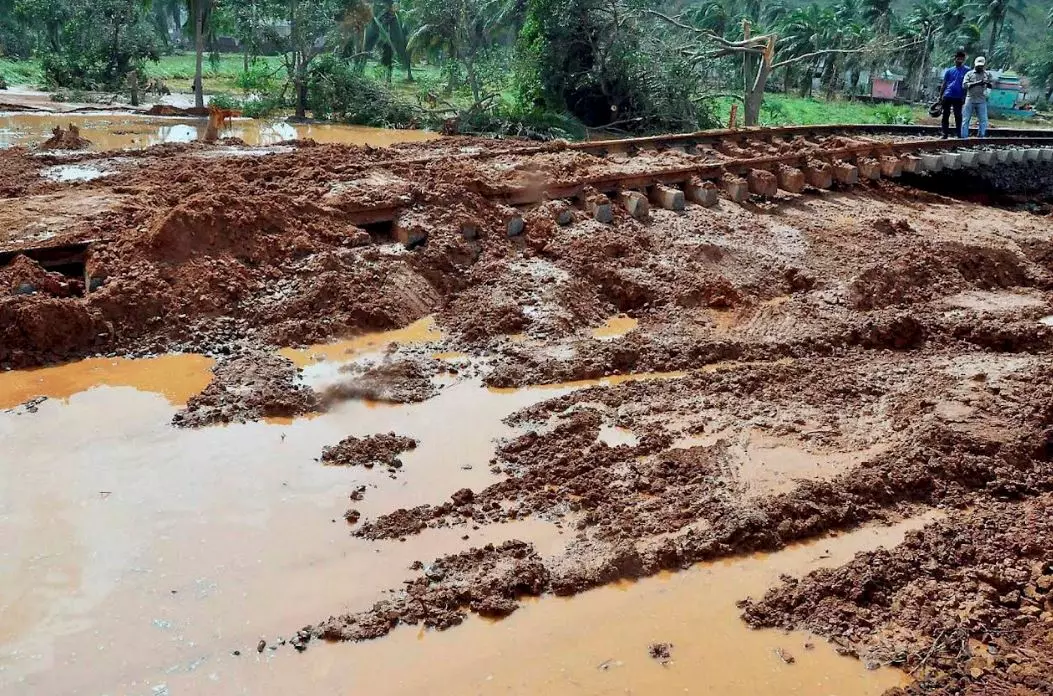Decade past Hud-Hud cyclone
The disaster claimed the lives of 63 persons and resulted in the loss of nearly 6,000 livestock and damage to over 200,000 homes.
Visakhapatnam:A decade after Cyclone Hud-Hud wreaked havoc, the lessons learned from this devastating storm continue to shape disaster preparedness and response strategies in cyclone-prone regions.
The cyclone that made landfall on October 12, 2014, near Visakhapatnam, was classified as an extremely severe cyclonic storm with wind speed of 205 km/h (127 mph) as it crossed the coast.
It originated from a low-pressure area over the Tenasserim coast and intensified as it moved west-northwest towards the Andaman Islands. By the time it made landfall near Visakhapatnam, it sustained winds of 180km/h. The disaster claimed the lives of 63 persons and resulted in the loss of nearly 6,000 livestock and damage to over 200,000 homes. The agricultural sector was hit hard, with more than 750,000 households engaged in farming, fisheries and handlooms.
Over the past decade, significant improvements have been made in disaster management and preparedness. District collector Harendhira Prasad explained this to Deccan Chronicle. Stated the collector: "Several initiatives have been undertaken and implemented to mitigate the impacts of future cyclones. We have identified vulnerable coastal areas and designated nearly 50 locations as evacuation centres, including cyclone shelters and community halls, which can accommodate over 20,000 people.”
“Our local authorities are now better equipped to maintain critical infrastructure during storms. Telecom companies have taken proactive measures to ensure that mobile towers remain operational during power outages by supplying fuel for generator backups and all of the system has become underground.”
“Additionally, our water supply systems are now supported by backup generators to ensure functionality during cyclones. The health department has increased its efforts by stocking anti-venom and essential medicines to prevent outbreaks of diseases such as diarrhoea and typhoid. Special attention is given to high-risk individuals, including pregnant women, who are relocated to hospitals for care," the collector said.
Despite these advancements, officials acknowledge that much work remains. Retired IAS officer EAS Sharma pointed out that informal settlements, home to some of the most vulnerable populations, are still at risk. "Homes in low-lying and hillside areas are still at risk of being swept away," he stated, advocating better construction practices and more inclusive relief efforts.
Community members shared harrowing experiences from Hud Hud. Gangamma, a 70-year-old woman from a fishing community, recalled the terrifying moments as the storm approached, “In my 70 years, I have never seen anything like this. We had to leave everything behind and run for our lives.” Similarly, fisherman Appala Naidu described the storm as a “monster,” illustrating the intense fear experienced during the event.
Notably, then chief minister Nara Chandrababu Naidu spent seven days in Visakhapatnam overseeing the rescue and relief operations. During this period, a significant tree plantation initiative was undertaken, of which, some 70 per cent of the region's green belt flourish today. Additionally, the disruption of telecommunication services and the critical challenge of restoring electricity was tackled with major strain that took a lengthy seven days.





